TOW
Table of contents:
Read Origins of TOW
Read Project Management
Read System Description
Read System Chronology
View TOW photos
Origins of TOW
|
During World War II several countries had studied the use of guided weapons in which wires were used to carry a steering signal from a controller at a launch site to a missile in flight. After the war, this work was continued, notably in France and Australia. By the early 1950s, the work in France had resulted in the SS 10 wire guided missile. The U.S. Army tested the SS 10 during 1953 and found it unsatisfactory for Army use. Shortly thereafter, the U.S. Army initiated development of a wire command link antitank missile system called DART. By the summer of 1958, it was clear that DART would be less satisfactory than anticipated so its development was terminated, and the U.S. Army procured limited quantities of an improved version of the French SS 10, and later ENTAC and SS 11, were acquired for use as interim antitank systems. In the fall of 1958, at the direction of Office, Ordnance Research and Development (R&D), an Ad Hoc Working Group was established at the Ballistic Research Laboratories (BRL) to study the Long Range Time Period Heavy Assault Weapon (HAW) problem and to recommend a program of work leading to system availability by 1965-70. The Ad Hoc Working Group (chaired by a BRL weapons analyst with representative members from Ordnance development organizations located at Picatinny Arsenal, Frankford Arsenal, Redstone Arsenal, Watervliet Arsenal, Detroit Arsenal and Harry Diamond Laboratories) recommended that initiation of development of a specific system be deferred for approximately 2 years and during that time the program consisted of: a) vigorous supporting research efforts to characterize alternate guidance schemes (leading ultimately to homing systems), and b) field test programs to investigate performance of foreign produced antitank guided missile systems. That recommendation was approved and implemented. The resulting supporting research efforts were supervised by the Special Projects Group of the Ballistics Research Laboratories. That small group was headed at the time by Charles L. Poor III; his able assistant was Harry Reed. |
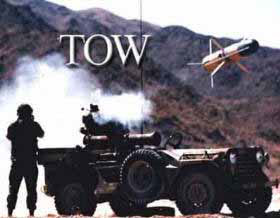
|
|
In the early summer of 1961, the Office, Chief of Ordnance (OCO) requested the Ballistic Research Laboratories to take account of all that had been learned from the tests and analyses of foreign antitank missile systems and the multiple elements of the supporting research program, most of which had been carried out in cooperation with other U.S. Army Ordnance agencies and non-government industrial advocates. OCO also asked BRL to propose a program for acquisition of a Heavy Assault Weapon for the Long Range Time Period (i.e. initial operational capability [IOC] 1965-70.) Response was assigned to the Armored Systems Evaluation Branch of the Weapon Systems Laboratory where David Hardison, Branch Chief, undertook the task of producing a merit assessment of the technical readiness, projected performance at operational tasks, and system burden of candidate approaches. His assessment in hand, Hardison reconvened the earlier Ad Hoc Working Group, with a few changes in personnel, for critical review by persons whose parent organizations advocated a variety of candidate systems. Obviously, there were two main options: a) acquire one of the existing systems, or b) develop a new system. By this time, market prospects had resulted in the generation of a large number(1) of candidate proposals each strongly advocated by its would-be vendor. The BRL evaluation(2) of the 27 candidates concluded centrally that every one of the 27 system concepts was seriously flawed in one or more ways which would result in it being ultimately unsatisfactory. Needless to say, the proponents of each system/ concept evaluated were not pleased, at least initially, by this conclusion. Extended technical discussions among Working Group members, however, eventually led to its acceptance. That conclusion had, prior to convening the Ad Hoc Working Group, prompted Hardison in a thought experiment to create a new system concept which would be responsive to the operational needs assessed to be most critical (i.e., not the same as then existing Military Requirements), would not share the flaws of other concepts, and based on demonstrated technologies, apparently could be confidently realized. Heavy considerations included system dependability, ease of operation, responsiveness, high accuracy against stationary and moving targets at all useful engagement ranges, lethality against existing and projected targets, crew “tailgate” transportability, and system costs. What Hardison had conceived was a new system having key features that were more or less proven in other applications. It would be a rocket propelled guided missile tube launched (as with the earlier SHILLELAGH) to ensure that during its early trajectory the missile would remain ever close to line-of-sight thus greatly simplifying aerodynamic and control issues. The proposed system would use optical (modulated infrared) flare tracking with automatic command control (as demonstrated earlier in SHILLELAGH and, at Redstone Arsenal, in the SS 11/ICU) thus maximizing ease of training and operation. In addition, the system would use a wire data link for cost effectiveness and, especially, for robustness to countermeasure and environmental degradation. Of course, appropriate values for other system parameters such as minimum and maximum range, warhead type and size, chance-of hit, system weight, costs, velocity profile, etc. were called out, but the sine qua non of the concept would be the Tube launched, Optically tracked, Wire data link auto-guided missile. Upon hearing the concept, Harry Reed suggested that it be called TOW so as to forever capture the main defining features of the concept. At the time, it seemed like a good suggestion and the name has lasted. Two other points bear mentioning: a) the initial notion of an unguided round was never supported, and b) the User’s Requirement from the outset envisaged that the HAW system would be useable from helicopters as well as from ground and ground vehicle mounts. At the time, a sight suitable stable for use with clear line of sight (CLOS) systems such as TOW had not been demonstrated. Rather than dismiss the CLOS approach which appeared superior in the ground applications, the helicopter application simply was set side. Later, of course, suitable sights were developed and air vehicle launch application occurred. After marathon sessions ending shortly after midnight on the final day of discussing issues ranging from central to minor, members of the Ad Hoc Working Group reached unanimous agreement and supported the BRL recommendation to proceed with the TOW concept. When the results of the analysis and the BRL-conceived TOW system concept were briefed to Pentagon officials, they correctly pointed out that no prospective hardware development firm had proposed such a concept and that no all-up design had been made. The Department of the Army (DA) tasked BRL representatives to share the concept with industry and, for a period not to exceed 6 months, obtain industry input as to how such a concept would best be packaged. Broadly, the aim was to gain additional information leading to a more confident judgment as to whether the system concept being called TOW could in fact be practically realized. As far as is now recalled, there was no directive that the "studies" should result in demonstration hardware; neither was it discouraged. On a highly compressed schedule, in an effort led by Harry Reed, BRL obtained and evaluated solicitations from industry. BRL selected three firms—Hughes Aircraft Company, Martin Marietta, and McDonnell Douglas Aircraft—to study the TOW concept in a competitive “skunk work” approach. During the study period, BRL had minimal contact with the study teams, and was limited mostly to getting data to be used in computer simulations and in range facility needs should hardware demonstration firings be offered.(3) Each of the three contractors delivered paper and hardware products which led to the finding that a system along the lines called TOW could indeed be developed successfully. From the engineering analyses and hardware demonstrations, feasibility was judged to have been demonstrated. The Hughes approach was assessed the best overall but certain of its subsystems were not as good as proposed by others. Shortly after BRL completed the feasibility evaluation, a development program was approved and acquisition responsibility was assigned properly to the U.S. Army Missile Command (MICOM). (1) A total of 27 specific system concepts were being advocated: 8 manually guided missiles, 3 beam riding missiles, 4 semi-active homing rockets and shells, 4 open-loop systems, 2 (LOBL) guided missiles, and 6 (CLOS) guided missiles. (2) BRL Memorandum (BRLM) Report 1365, A Study of HAW, David C. Hardison, September 1961. The response initially was in the form of a long briefing which upon request was documented as BRL Technical Note 1417, dated July 1961, which was superseded by the BRLM 1365 cited here. (3) Competitive pressures caused the selected study firms to deliver both paper and missiles for demonstration firings. |
Project Management
|
As one of his last official acts (1), the Chief of Ordnance on 12 January 1962 designated the MICOM Commander as the weapon system manager for the TOW/Heavy Antitank Weapon. The Missile Command established the Antitank/Aircraft Weapons Commodity Office on 19 November 1962 to manage the TOW weapon system. After higher headquarters approved the TOW development program in January 1963, MICOM established the TOW Project Office on 1 October 1964. Studies leading to the development of the XM65 TOW armament subsystem for the AH-1 series COBRA helicopter started in 1970, and on 5 April 1970 the airborne TOW program transitioned from the Aircraft Weapons Commodity Office to the TOW Project Office. In 1969, the U.S. Congress House Authorization Subcommittee (HASC) considered replacing the TOW with the SHILLELAGH missile. Extensive studies, presentations, and demonstrations were made to the Department of Defense (DOD) and HASC by DA, the U.S. Army Materiel Command (AMC), and MICOM supporting both TOW and SHILLELAGH in their respective operational roles and missions. The TOW/SHILLELAGH controversy was resolved when the joint session of Congress voted in September 1970 to continue the TOW in the heavy antitank weapon role. In the early days of TOW development and up to first production, the TOW missile reliability was significantly below expectations and requirements. Missile reliability was a measure of the total missile performance from trigger pull to target impact. The first major subsystem problem was the launch motor. The pre-development demonstration missile and the first few development rounds included a launch motor that was 6 inches in diameter (full missile diameter), about 6 inches long, and placed just behind the missile center of gravity. A “blast tube” about 8 inches long and 1½ inches in diameter with a nozzle at the aft end was attached to the motor. The propellant was multi-perforated single base grains, each about a ½ -inch diameter and a ½-inch long, which were “poured” into the motor and trapped during burning. This propellant’s advantages were low cost and a very short burning time. It’s disadvantage was that it was not controllable and resulted in potential gunner hazards. Fortunately the MICOM Propulsion Laboratory had considerable experience in head end suspended double base (M-7) propellant (3.5-inch bazooka and light antitank weapon). The laboratory was given responsibility and authority to direct the prime contractor’s propulsion efforts. The rocket motor design and the propellant were both changed to accommodate double base head end suspended propellant. The launch motor was the only missile subassembly that required a total design change. All of the other subassemblies were at one time or another significant reliability issues. Possibly the most intractable was the IR lamp. Functioning of the lamp required establishing an arc between the electrodes of a xenon-filled glass lamp. The IR lamp was not turned on until after the launch acceleration was complete. A bridge wire between the electrodes was the means by which the arc was established. The problems included the integrity of the bridge wire during launch and maintaining the arc throughout flight. The wire command link breakage was a problem throughout development and periodically recurred during early production. The last significant problem before engineering and service testing and production release was the launch container. The launch container was sealed at both ends. When the missile was fired, the launch motor blast ruptured the rear seal and overpressure from the missile gyro stored gas bottle ruptured the front. The shock wave associated with the rear seal caused component failures, while the front seal broke the wire command link. Early in the development program, a decision was made to design the missile for no testing (except flight tests) after the missile was placed in the launch container at the factory. Moreover, during missile assembly the missile skin was permanently joined to each section (except for the warhead) such that missile disassembly would require destroying skin sections. The notion of a non-testable, non-provisioned missile caused some concern both from technical and logistical standpoints. The technical argument was to include test capability and eliminate if not needed; the logistics concern was that once incorporated, it would be difficult to eliminate, especially if provisioning had been initiated. The TOW production contract was awarded in 1968, and the first TOW production milestone was met in August 1969 with the delivery of the first TOW missiles in accordance with the contract schedule. By September 1970, three TOW training battalions were operational. TOW replaced the M140 106mm recoilless rifle and the French ENTAC missile system. The Army completed the phase out of the latter weapon system by 30 September 1970, after TOW was standardized. There were two unique features of this production contract: flight acceptance tests on missile lots offered for delivery, referred to as fly-to-buy (FTB), and an award fee for reliability improvement above a specified threshold for all delivered missile lots. The FTB was new to missile production programs. It had been incorporated in the SHILLELAGH production contract, but at the time of the TOW award, SHILLELAGH deliveries had not begun. FTB was routine in ammunition production, but had not been applied to complex missile systems. The FTB feature provided for the test firing of a random sample from an offered lot. If a specified number hit the target the lot was bought. If not, that lot was the contractor’s responsibility. Various options were provided, e.g., for rework, retest, etc. The FTB feature has remained for subsequent production contracts, and MICOM subsequently used similar features on other missile systems. The award fee provision was likely a major factor in the TOW reliability growth. At the time of the production contract award, reliability was significantly less than desired. A prior cost effectiveness analysis with reliability as a variable provided a way to estimate the dollar value of incremental reliability growth. Using that analysis as a base, an award fee was established for each fractional reliability improvement demonstrated with FTB test results of all of the acceptance tests for the first 2 years of production—approximately 20,000 missiles delivered. There were no lots rejected. The fee awarded was nearly the maximum, corresponding to more than a 10 percent increase in missile reliability. After the production contract was awarded all TOW activities were segregated, new vinyl floors replaced oil soaked factory floors, all machines were painted with TOW unique colors, and the TOW area became the premier work assignment. The cleanliness of the TOW production facility and the motivation of Hughes management and production workers were certainly important in achieving the attained reliability. While the award fee provision was certainly a motivator, it is also probable that Hughes Aircraft wanted to demonstrate that the successful completion of their first Army production contract would lead to more orders. Prior to the TOW production contract, Hughes was primarily a U.S. Air Force (USAF) supplier. The plant itself was an Air Force facility—USAF Plant #44. Significant management actions that had a direct, positive effect on the TOW program included the project manager’s tenure, competitive contracting, strong configuration management with an effective Value Engineering (VE) program, award fee engineering support contracts, and extensive foreign military sales (FMS) activity. In the 1960s and early 1970s, Army project managers served only 2 or 3 years in their assignment due to selection for Senior Service schools, assignment to Vietnam, or retirement. The first two TOW project managers (PMs) served only 2 years each. When Lieutenant Colonel Robert W. Huntzinger was assigned as TOW PM in June 1968, his tour was expected to be 3 years. In 1970-71, the Congress and DOD recognized that PM tours were too short for good management. As a result, Colonel Huntzinger’s assignment was extended year by year until he retired in November 1976. This 8-year, 5-month continuous tour as TOW PM provided continuous and consistent leadership and direction from the negotiation of the TOW production contract through the TOW Vietnam experience, development and fielding of airborne TOW, development of the TOW night sight and other system improvements to complete fielding in U.S. Army, Europe (USAREUR) and Korea, and foreign military sales to 22 countries. Colonel Huntzinger, who served under four AMC and 4 MICOM commanders, holds the record tenure for Army PM. The TOW missile, launcher, and other system components were competitively procured and even a second source was established to ensure competitive pricing and continuous production in case one producer experienced production difficulties. Starting with the development program, the project office required all contractors to document fully and to provide detailed costing for all proposed configuration changes. These were reviewed by the Configuration Management Board and approved, modified, or disapproved personally by the project manager. To strongly encourage TOW contractors to aggressively look for system improvements in producibility, reliability, performance, or cost reduction, contracts included VE provisions that returned 50 to 90 percent of the initial government cost savings to the contractor. This allowed the contractors to spend their funds on expensive preparation of changes in anticipation of a financial return. The normal VE payment at that time was 10 to 20 percent. Engineering Support contracts with the prime contractor provide valuable support to the project office. To ensure thorough and responsive support, each task manager’s performance was reviewed quarterly and an award fee of minimum to 100 percent of the available award fee was assigned. In initiation of this type of contract, dramatic improvements in task support were obtained; the contractor posted and tracked closely each manager’s performance, and several task managers were relieved. In the pricing for foreign military sales a part of the U.S. development costs were included. Due to the extensive TOW FMS program, a substantial amount of TOW development costs were recouped. On 2 May 1972, the TOW missile made military history by becoming the first American-made guided missile to be fired in combat by U.S. soldiers. During the fighting at Kontum in South Vietnam on that date, the 1st Combat Aerial TOW Team, equipped with the XM26 TOW subsystem mounted on a UH-1B HUEY helicopter, destroyed a total of four M-41 tanks, one 2½ -ton truck, and a 105mm howitzer. The involvement of the airborne TOW in Vietnam is particularly interesting regarding the speed of its deployment and its efficiency as a tank killer in a combat situation. It is best told by Hugh McInnish, who was the airborne TOW engineer in the TOW Project Office at the time of the system’s deployment. As he recalls, |
|
I was at work one day in April 1972 when the phone rang and an officer up at the Pentagon was on the other end of the line. “I have been reading your article in Aviation Digest,” he said, “and I was wondering if you could put together the same ‘package’ that you had in Germany and send it in the other direction to test it against some real targets.” The previous spring I had been in Germany as the leader of a Government-Contractor team sent to support the Germans in a lengthy firing test of the airborne TOW. We had two XM26 airborne TOW prototypes mounted on two UH-1B helicopters. These were the only two such systems in existence at that time. After the test I published the article mentioned by my caller. This was at the time of the Easter Offensive, and tanks had just appeared for the first time in Vietnam, so I needed no cryptographer to decode the message: Could we go to war with our two prototypes? We could, and two weeks later I landed at Saigon, having crossed the Pacific via Hawaii, Guam, and Wake Island in a C-141, catching catnaps on an air mattress atop crates of TOW ammunition in the cargo hold. In the meantime we had succeeded in finding the pieces of the “package” we had used in Germany: men, helicopters, black boxes, and all. From Saigon we move to Camp Holloway, near Pleiku in the Central Highlands, refitted the helicopters with their XM26 systems, and went into combat. At that point the airborne TOW was the most novel weapon in the war, and it was a dazzling success. The team never failed to destroy a target once seen. Tanks were the primary target, but also on our list were armored personnel carriers, trucks, and machine gun positions. One of the latter I remember especially. The enemy had a penchant for mounting a machine gun on the pinnacle of a water tower in Kontum. We would shoot it down, he would replace it, and we would shoot it down again. One day someone spotted a small, suspicious looking island in the middle of a river. On a hunch one of our crews shot at the foliage—and sure enough a tank exploded when the missile hit. This led to a suspicion of another island so it too was shot. But this island—was just an island. Only leaves and dirt rose into the air. When this mission was completed I continued my journey westward and reached Germany via Bangkok, Delhi, and Madrid. I spent some time giving a series of briefings in Europe, then went even further west, finally proving the roundness of the world by reaching Huntsville and home again. After I returned I received a letter from LTC Thomas P. McKenna, whom I did not know. He had been on the ground during the battle for Kontum when our TOW helicopters were overhead attacking enemy tanks. He wrote, “I may well owe my life to the TOW missiles that broke the back of the enemy assaults. |
|
The Daedalian Society awarded its Wolfe Memorial Trophy to the TOW weapon system in May 1974. Presented annually, the award recognized the individual or group responsible for developing an outstanding military weapon system. Additionally, more foreign nations were using the TOW missile by 31 December 1976 than any other MICOM missile involved in foreign military sales at that time. In November 1977, the TOW became the most heavily produced Army guided missile. Despite these accomplishments, on 15 April 1977, the U.S. Army Materiel Development and Readiness Command (DARCOM), as the Army Materiel Command was then known, established a provisional Advanced Heavy Antitank Missile System (AHAMS) Project Office to develop a replacement for the TOW. This effort was later cancelled in favor of TOW 2. Later that year, on 29 September 1977, MICOM combined the TOW and DRAGON project offices. Less than three years later, though, the TOW/DRAGON Project Office was redesignated the TOW Project Office, following termination of project management for the DRAGON weapon system. In April 1980, the DRAGON was relegated to Level II management in the MICOM Weapon Systems Management Directorate (WSMD). The TOW missile program, on the other hand, expanded to include five missile variations by 1992, while there were two variations of the TOW subsystem. Effort on a next-generation TOW Fire and Forget missile was under way by FY 2000. The FY 1987 Defense Authorization Act designated TOW as a Defense Enterprise Program (DEP). The DEP was an initiative designed to increase the efficiency of a defense acquisition program’s management structure as well as enhance program stability through the use of milestone authorization. The TOW was one of two programs managed at Redstone Arsenal nominated to participate in the FY 1988 DEP. Subsequently, Hughes Aircraft Company representatives and various Army and DOD officials marked the production of 500,000 TOW missiles at a ceremony held in November 1989 at the contractor’s Tucson, Arizona, facility. On 8 January 1990, the MICOM WSMD assumed operational control of the TOW M65 subsystem (COBRA). Four years later, on 2 March 1994, responsibility for the ground TOW weapon system transitioned to WSMD after the TOW Project Office was disestablished on that date. Included in the transfer were the Ground TOW launcher, night sight, M70 trainer, and ancillary equipment. That same day, the Close Combat Anti-Armor Weapon Systems (CCAWS) Project Office was established. The new organization’s management responsibilities included the Improved Target Acquisition System (ITAS), the Improved Bradley Acquisition Subsystem (IBAS), TOW missile production, Bradley/TOW 2 subsystem production, and future CCAWS programs. As noted in the chronology, TOW studies began some 40 years ago, and the first experimental firings were in the summer of 1962. From that start there has been steady progress in development and deployment of TOW variants to meet the challenges of ever increasing threats. More TOW missiles have been produced than any other Army guided missile. TOW met a vital need of the U.S. Army and has played a critical role in combat operations. Moreover TOW’s capabilities were such that it became the principal heavy antitank weapon for many countries that shared U.S. interests. The TOW Project Office has also been a rewarding place to work as attested by the extended tenure of many of the project office personnel. Ms. Evelyn Hunter joined the project as a secretary in November 1962. She remained as the secretary in the Engineering Division until her retirement in 1993. Ms. Judy Polly came aboard in October 1964, and she remained associated with the program as of June 2001. She is planning to retire in October 2001, having spent 36 of her 37 years of civil service with the TOW project. Mr. John Wlodarski was involved with TOW from the summer of 1961 until he retired in 1980. John was involved in the study phase and was the configuration manager until his retirement. Mr. Robert Q. Taylor worked on TOW beginning in early 1962. Mr. Taylor was chief of the Engineering Division until June 1971 when he became the Deputy Project Manager until he retired in 1977. Mr. Robert P. Whitley, Mr. Taylor, Mr. Ray Turner, Mr. James Alden, and Ms. Hunter formed the TOW Project Office in November 1962 in the Development Division of the Research and Development Directorate. Mr. Whitley was designated as the Deputy Project Manager of the Tow Project Management Office when it was established in October 1964. He held that post until he was reassigned to another MICOM management position in June 1971. Mr. Alden and Mr. Turner remained in TOW until they retired. Mr. Coy Jackson joined the TOW engineering staff in 1963, and when he retired in 1988 he was chief of the Engineering Division. Mr. Jackson continues to be called on to provide advice and consultation on TOW related matters. As a point of interest, Mr. Jackson spent his entire civil service career in the TOW office. The first two project managers, LTC Ballard B. Small, Jr. and COL James N. Lothrop, Jr. each served 2 years. By contrast, the third PM, COL Robert W. Huntzinger, served 8½ years, which covered the most critical period of TOW initial and rate production, deployment, and support. Moreover, it was during this period that foreign military sales were initiated and expanded. His leadership also covered TOW’s Vietnam experience. TOW’s long history has provided an opportunity for several officers to serve two tours of duty in the TOW Project Office. COL Thomas M. Devanney served in the project office as a junior officer and returned in 1987 as the PM. COL Jack Conway retired as the TOW PM in 1993, but had served an earlier tour in the project office. BG William B. Nance’s last position at MICOM was as the Program Executive Officer for Fire Support, to which the TOW PM reported, having served earlier as the manager of TOW’s application to the Bradley Fighting Vehicle. Many other individuals have given a significant portion of their career to TOW—project office, laboratory, other AMC, and contractor personnel. All have played a vital role in TOW’s success. This history has focused on the TOW Project Office. However, the reader should recognize that TOW was designed and initially produced by the Hughes Aircraft Company. While the Hughes corporate identity has changed over the years, the people involved and the workplace retained substantial continuity. Although periodic differences regarding the short-term objectives of each occurred between the project office, Hughes, and other contractors involved, the long-term goal was to provide a superior fighting capability to U.S. servicemen and women. It has been and continues to be a highly successful team effort. (1) From 1962 to 1982, the Office of the Chief of Ordnance was abolished and other Army agencies performed all ordnance-related administrative functions. The position was reestablished in 1983 as a proponent agency for all ordnance-related occupational specialties and career management fields. On 9 May 1986, the Ordnance Corps officially joined the Army’s regimental system, and the Office of the Chief of Ordnance was reestablished as the head of the Ordnance Corps. |
System Description
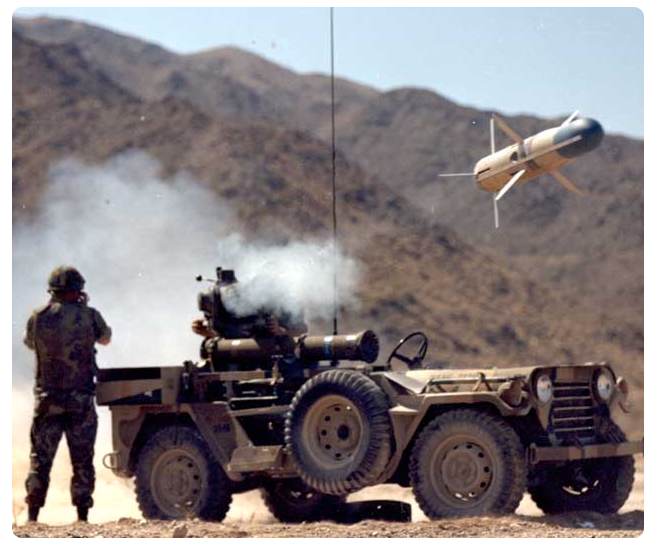
|
|
The tube-launched, optically-tracked, wire-guided (TOW) missile system is a crew portable, vehicle-mounted, heavy anti-armor weapon system. It consists of a launcher and a missile that can be effectively employed in all weather conditions to engage tanks; other armored vehicles; and various point targets such as bunkers, crew-served weapons and launchers, and non-armored vehicles. It also has a limited self-defense capability against threat helicopters. The launcher consists of a launch tube, traversing unit, missile guidance set (MGS), night sight, battery assembly, optical sight, tripod, overpack, shroud, and carrying strap. The all-up round missile is encased in a disposable launch container. The TOW can be operated from the ground, vehicles, or helicopters. It is mounted on the Improved TOW Vehicle (ITV), the Bradley Fighting Vehicle (BFV), the High Mobility Multipurpose Wheeled Vehicle (HMMWV), and the COBRA helicopter. A total of 46 allied nations use the TOW, and it is co-produced in Switzerland. There are six versions of the TOW missile. The original missile—the BGM-71A Basic TOW—was fielded in 1970. It had a 3000-meter range and was 6 inches in diameter except for the warhead which was 5 inches. The second missile to be built, the Extended Range TOW, was delivered in 1978. Delivered in 1981, the BGM-71C Improved TOW (ITOW) warhead included an extended probe for greater standoff and penetration. The BGM-71D TOW 2 weapon system, a product improvement program (PIP) initiated in 1979, incorporated a full caliber (6-inch) warhead with extendable probe on the missile. To compensate for the added weight of the warhead, the missile flight motor was redesigned with 30 percent more total impulse. Improved guidance link capability to enhance performance in a degraded environment and guidance link hardening against electro-optical countermeasures were added to the existing launcher. In December 1984, a further enhancement to the TOW 2 was started to counter the appliqué armor threat. Hughes Aircraft developed the TOW 2A missile for the U.S. Army to defeat advances in the armor threat caused by the advent of first and second generation Explosive Reactive Armor (ERA). The BGM-71E TOW 2A incorporated a tandem warhead armament system to achieve increased lethality against tanks configured with ERA. The newest version of the TOW missile is the BGM-71F TOW 2B, which started production as an engineering change proposal to the FY 1990 production contract. The TOW 2B is a “flyover shootdown” missile with two explosively formed penetrator (EFP) warheads. Designed to defeat the next generation advanced armor threat well into the 21st century, the TOW 2B features a dual-mode sensor and a new armament section equipped with two warheads substantially different from those used in earlier TOW versions. Because the TOW 2B is designed to attack targets from the top, the trajectory places the missile slightly above the target when its two warheads explode downward. The TOW 2B was not designed to replace the TOW 2A, and the U.S. Army concurrently fielded both missile versions. The last TOW missiles for U.S. forces were produced in May 1997. The TOW Sight Improvement Program (TSIP) effort was started in 1990 to significantly enhance the TOW system’s current capabilities and ensure its effectiveness into the next decade. However, the Secretary of the Army cancelled the TSIP on 15 October 1991 because of declining budget and funding issues. The Assistant Secretary of the Army for Research, Development and Acquisition directed the PEO, Tactical Missiles to coordinate the development of an affordable alternative. The latter effort subsequently became known as the Improved Target Acquisition System (ITAS) being developed for the Army's light forces. The ITAS was a material change to the Ground TOW 2 weapon system for first-to-deploy light forces. It improved the TOW’s target detection recognition and engagement capability by incorporating a second generation forward looking infrared (FLIR), a laser range finder, and automatic tracking features. All missile configurations can still be fired, allowing room for growth for follow-on missiles. The ITAS is being fielded at battalion level, replacing TOW 2 in light infantry units. The modification kit consists of an integrated (Day/Night Sight with Laser Rangefinder) Target Acquisition Subsystem (TAS), Fire Control Subsystem (FCS), Battery Power Source (BPS), and Modified Traversing Unit (TU). The ITAS operates from the HMMWV and associated dismount platforms. In September 1998, the first unit equipped with the ITAS was A Troop, 1/17th Cavalry, 82nd Airborne Division. On 27 July 1993, the PEO, Tactical Missiles approved the Acquisition Plan for the Improved Bradley Acquisition Subsystem (IBAS), an improvement of the current Bradley TOW acquisition and fire control subsystem. This effort was an extension of the TOW ITAS. In FY 1998, the U.S. Army Materiel Command (AMC) released a request for information on the next generation heavy antitank missile, the TOW Fire and Forget (F&F) which is supposed to replace the current series of TOW missiles. Employed either mounted or dismounted from the TOW launcher, the TOW F&F will have a secondary mode of attack that together with the primary F&F mode will enable the operator to hit any target acquired within the missile’s range. The TOW F&F will integrate an advanced focal plane array and imaging infrared (FPA/IIR) seeker. The IIR seeker and software will provide automatic target tracking and eliminate the TOW wire, significantly increasing soldier survivability and overall system lethality. Designed to engage any target that the gunner can see, day or night, even when faced with battlefield contaminants or countermeasures, the TOW F&F missile will also defeat threat tanks equipped with advanced armor and active protection systems. The system will include the encased TOW F&F missile, the shipping and storage container, and the ITAS platform applique kits. It will also have increased range, lethality, and platform survivability; be able to counter active protection system threats; and have a modular design for future growth and shelf life extension. On 9 September 2000, the Army awarded a $125.9 million TOW F&F missile EMD contract to Raytheon’s Missile Systems business unit in Tucson, Arizona. |
System Chronology
|
January 1957 An in-house research effort was started at Redstone Arsenal from which evolved the automatic infrared (IR) command guidance concept on which the tube-launched, optically-tracked, wire-guided (TOW)/Heavy Antitank Weapon (HAW) system was based. 16 October 1961 The Assistant Secretary of the Army (Research and Development) and the Secretary of Defense approved a plan which called for in-house and contractor studies to prove the feasibility of the TOW antitank missile system before the start of a large and costly development program. 10 January 1962 Three companies—Hughes Aircraft Company, Martin Marietta, and McDonnell Aircraft Corporation—were awarded 6-month contracts to design and fabricate prototype hardware adequate for a flight demonstration of the technical feasibility of the proposed TOW missile concept. 12 July 1962 As one of his last official acts, the Chief of Ordnance designated the U.S. Army Missile Command (MICOM) Commander as the weapon system manager for the TOW/Heavy Antitank Weapon (HAW). (Note: From 1962 to 1983 the Office of the Chief of Ordnance was abolished and other Army agencies performed all ordnance-related administrative functions. In 1983, the position was reestablished as a proponent agency for all ordnance-related occupational specialties and career management fields. On 9 May 1986 the Ordnance Corps officially joined the Army's regimental system; and the Office of the Chief of Ordnance was re-established as the head of the Ordnance Corps.) December 1962 A letter contract was awarded to Hughes Aircraft to continue the TOW effort pending negotiation of a definitive development contract. January 1963 The TOW missile system development program was approved. 3 May 1963 TOW was the first 100 percent cost-plus-incentive-fee (CPIF) contract negotiated and signed by MICOM. December 1963 Research leading to the airborne TOW began when MICOM awarded contracts to Hughes Aircraft Company and the Philco Ford Corporation to design, fabricate, and install a stabilized sight on the UH-1B HUEY helicopter that would solve the problem of firing a TOW or SHILLELAGH missile from the air. These contracts called for the preliminary design of a complete tactical missile system (XM26) which would replace the M22 subsystem. 1 October 1964 The TOW Missile System became project managed at MICOM. The system had previously been managed by the Antitank/Aircraft Weapons Commodity Office at MICOM, which had been established on 19 November 1962. 1 October 1964 LTC Ballard B. Small, Jr., was the first TOW Project Manager (PM). 1965 After the Hughes Aircraft Company stabilized sight was selected, MICOM was authorized to develop the XM26 airborne subsystem using the TOW missile. June 1966 Hughes Aircraft Company received the initial research and development contract for the XM26. 30 June 1966 LTC Ballard B. Small, Jr., the first TOW PM, retired. 26 September 1966 COL James N. Lothrop, Jr., became the TOW PM. 1967 Five prototype XM26 TOW airborne launching systems were built for testing on the UH-1B. The XM26 used three of the same missiles developed for the infantry, mounted in each of two launch pods on either side of the helicopter. The aircraft’s left nose was modified to accommodate an inertially stabilized telescope sight operated by the copilot/gunner in the left seat. March 1968 The TOW/HUEY (XM26) program was terminated and the effort was redirected to the TOW/CHEYENNE (AH-56A) program. 22 April 1968 The Assistant Chief of Staff for Force Development approved the limited production type classification for the TOW. 30 May 1968 COL James N. Lothrop, Jr., TOW PM, retired. 25 June 1968 LTC Robert W. Huntzinger became the new TOW PM. He was promoted to colonel on 22 October 1971. 28 June 1968 The initial TOW production letter contract was awarded to Hughes Aircraft Company. 29 November 1968 The definitized production contract for the TOW was awarded to Hughes Aircraft. 1969 MICOM learned that higher headquarters was again considering replacing the TOW with the SHILLELAGH. 10 June 1969 MICOM awarded a contract to the Chrysler Corporation Huntsville Division as the alternate TOW producer. August 1969 The first production milestone was met when Hughes Aircraft delivered the first TOW missiles in accordance with the contract schedule. 1970 Studies leading to the development of the XM65 TOW armament subsystem for the AH-1 series COBRA helicopter were started this year. 5 April 1970 The airborne TOW was transferred from the Aircraft Weapons Commodity Office to the TOW Project Office. September 1970 Three TOW training battalions became operational, replacing the M140 106mm recoilless rifle and French ENTAC system. By 30 September, the Army had completed phase-out of the ENTAC after the TOW missile was standardized. September 1970 The distribution of TOW launchers to U.S. Army, Europe (USAREUR) began. September 1970 The TOW/SHILLELAGH controversy was partially settled when the Joint Session of Congress voted to continue the TOW in the heavy antitank weapon role. 30 September 1970 A major portion of the TOW system was adopted as standard A. November 1970 The first tactical Basic TOW missiles were deployed. The first USAREUR TOW unit was equipped on 13 November. 1971 Representatives from MICOM, Hughes Aircraft Company, and Bell Helicopter Company assisted the German Army Aviation School in its evaluation of the TOW missile’s suitability for use in an airborne role. Although the XM26 prototypes used in the tests had undergone considerable engineering testing, they had never been given to the U.S. Army for service tests because the main developmental effort shifted to the more advanced AH-56 CHEYENNE weapons system. The German military, therefore, was the first to test the XM26. Despite adverse spring weather conditions in northern Germany, where the evaluation was conducted, the test program was successful. It concluded with the firing of six TOW missiles with live warheads. Fired from various ranges and flight conditions against actual tank hulks positioned on the range, the final shots effectively demonstrated the potency of the airborne TOW. (See related article... hyperlink opens a .PDF document) 1972 The requirement for an extended range TOW missile for the airborne role materialized. March 1972 The Army began the Improved COBRA Armament Program. The XM65 TOW/ COBRA development program was a functional upgrade of the XM26 TOW/UH-1B HUEY armament subsystem. The COBRA was the first helicopter designed expressly as a weapons carrier. 30 March 1972 The North Vietnamese Army (NVA) swept across the Demilitarized Zone (DMZ) on this date in a massive offensive against the south. The NVA was supported by numerous heavily armored Russian and captured American tanks. This action generated an urgent but unprogrammed combat requirement for the TOW antitank weapon system. The NVA “Easter Offensive,” however, gave the Army an opportunity to prove that the airborne TOW missile subsystem could be used as an effective weapon against Soviet armor. An impressive showing would help secure the funding needed for the advanced attack helicopter (AAH) program. 14 April 1972 The Department of the Army (DA) directed MICOM to remove the XM26 subsystem from storage and deploy it to Vietnam on the UH-1B HUEY gunship. The command was ordered to rush the subsystem and a load of TOW missiles to the battlefront. That same day, the TOW contingent at Fort Lewis, Washington, received a Joint Chiefs of Staff (JCS) Warning Order to prepare for deployment to Southeast Asia (SEA). The group had originally been organized to participate in the U.S. Army Combat Development Experimentation Command (USACDEC) Experiment 43.6 (Attack Helicopter, Daylight Defense). 21 April 1972 One week after receiving the order to deploy, three C-141 aircraft flew to Vietnam carrying two HUEY gunships, two XM26 subsystems, missile crews, and other equipment. The order to have the experimental airborne TOW system on the way to Vietnam, ready to fight, in 7 days generated one of the most unique deployments ever accomplished by the Army. COL Robert W. Huntzinger, TOW PM, headed the team effort that coordinated the monumental task and completed it in record time. Colonel Huntzinger handpicked the technical support team that accompanied the equipment to Vietnam. Heading the team was Hugh J. McInnish, who had spearheaded the development of the airborne TOW system at Redstone Arsenal. Included on the support team were an expert on the UH-1B helicopter from Bell Aircraft as well as two engineers and two technicians from Hughes Aircraft, each an expert on the TOW and its airborne guidance and control equipment. A last-minute replacement pilot/ gunner was obtained from the AAH program at the U.S. Army Aviation Systems Command (AVSCOM), St. Louis, Missouri. 22 April 1972 The 1st Combat Aerial TOW Team, Vietnam (also known as “Hawk’s Claw”), was designated and deployed to the Republic of Vietnam. The team’s name reflected the first-time use of the airborne TOW missile system in combat against an armored enemy. 24 April 1972 The TOW equipment and personnel arrived at Tan Son Nhut Air Force Base (AFB) outside Saigon. Because none of the Army aviators had ever fired a TOW missile from the UH-1B HUEY helicopter, the support team gave them a condensed course on the XM26 system. As part of their graduation exercise, the crews fired two missiles each from airborne helicopters. 28 April 1972 The NVA overran Tan Canh, northwest of Kontum (a provincial capital north of Pleiku) and began bringing in heavy armor to use against the Army of the Republic of Vietnam (ARVN) units falling back to the city. U.S. Army leaders ordered the XM26 TOW/HUEY helicopter crews and support team north to Camp Holloway near Pleiku in the Central Highlands. 29 April 1972 The entire TOW team was considered combat ready after undergoing additional gunner tracking training from 26 to 29 April, continuing system checkouts, and installing an armored seat modification. 30 April 1972 Beginning this date and continuing through 2 May, the 1st Combat Aerial TOW Team conducted their first live-fire training in the Pleiku area. The team had never fired a live TOW missile before being deployed to Vietnam. 30 April 1972 DA ordered the deployment of the ground-based TOW system with instructors to train U.S. and South Vietnamese crews to operate the weapon. May 1972 An 82nd Airborne antitank task force was airlifted to Vietnam with 24 jeep-mounted launchers, 500 missiles, and two ¾-ton trucks from the maintenance contact team. The task force consisted of a 48-man crew plus a maintenance contact team of 10 personnel from the 763rd Ordnance Company. In Vietnam, units of the task force were attached to the 3rd Brigade, 1st Cavalry Division (CD), whose personnel were trained to operate the TOW weapon system May 1972 The decision to deploy the 1st Combat Aerial TOW Team to the Pleiku/Kontum area near the Dak Poko River was based on two main considerations. The first was the 2nd Corps Tactical Zone’s (CTZ’s) critical need for an antitank system to counter the high probability of a large number of NVA armored vehicles in that sector. Another reason was the need to protect the XM26 TOW/HUEY helicopter assets from the SA-7 Grail antiaircraft missile system which the enemy had deployed in the 1st and 3rd CTZs. 2 May 1972 The 1st Combat Aerial TOW Team, equipped with the XM26 TOW subsystem, went into combat for the first time. CWO Carroll W. Lain made history on this morning when he fired a TOW missile which struck a tank. This was the first American-made guided missile to be fired in combat by U.S. soldiers. During this day’s fighting, the team destroyed a total of four M-41 tanks, one 2½ -ton truck, and one artillery gun (a 105mm howitzer). Fired from a range of 2700 meters, the TOW missiles hit directly on the tanks and howitzer, and caused secondary explosions a few seconds after impact because of ammunition rounds inside the targeted items. 5 May 1972 Just 5 days after MICOM received movement orders, the first aircraft carrying ground-based TOW equipment landed in Vietnam. This deployment operation, much larger than the first movement of the airborne TOW, involved 87 TOW launcher systems, about 2500 missiles, maintenance support personnel and equipment, repair parts, trainers, and instructors. MAJ Dale F. Norton of the TOW Project Management Office (PMO) was named logistics officer for the ground system. He and Jesse Rich, a civilian missile maintenance technician from the MICOM Directorate for Maintenance, deployed with the system. 9 May 1972 The Army used TOW missiles to destroy three PT-76 tanks from ranges of 2000 to 3000 meters, with first round hits resulting in secondary explosions. 10 May 1972 TOW training for South Vietnamese Marine Corps personnel began on this date and continued through 22 July. They fired a total of 163 TOW missiles. During the course of this training program, the first ground-based TOW was fired in actual combat. 14 May 1972 At 0600, a UH-1B HUEY helicopter equipped with the XM26 TOW subsystem arrived over Kontum after responding to the tactical emergency declared by the Second Regional Assistance Group (SRAG) advisors. Before two of the reported T-54 tanks could cross the river and reach the cover of the thick undergrowth along Route QL-14, TOW missiles fired at a range of 2500 meters stopped the tanks “dead in their tracks.” Flames spouted 30-feet high from the burning armor because of secondary ammunition explosions. 15 May 1972 The 1st Combat Aerial TOW Team continued to seek out the enemy, destroying an ammunition truck and a large bunker in the area northeast of Kontum. 16 May 1972 The first attempt to use the XM26 subsystem at night was a failure. At 0200, an XM26 TOW/HUEY helicopter, along with COBRA gunships from the 361st Aerial Weapons Company, was tasked to engage and destroy T-54 tanks firing 100mm rounds at Kontum City. Initially, the aircrew had extreme difficulty acquiring the tank silhouette. Once adequate flare illumination was obtained, the aircrew fired one TOW missile at the target. However, the missile infrared source blinded the gunner and he was unable to track the missile. The TOW’s impact was not seen. The mission was terminated because of a flare shortage. Later that same day, the 1st Combat Aerial TOW Team destroyed a truck and a 130mm howitzer from a range of 2500 meters. The first missile fired at the howitzer’s breech narrowly missed, but the second missile hit the target and caused a secondary explosion. The TOW team also destroyed two NVA armored personnel carriers west of Kontum on the same sortie. The second TOW was fired 5 seconds after impact of the first missile, unexpectedly demonstrating to the aircrew that multiple targets could be engaged on the same firing run. 18 May 1972 A forward air controller (FAC) at the Kontum airfield spotted two tanks about 2 miles out from the defenders, indicating the NVA’s reluctance to expose their armor to accurate antitank fire. The FAC also noticed an “island” on the river just north of the Kontum City perimeter that had not been there the day before. The “island” turned out to be a camouflaged T-54 tank that had stalled crossing the river. The 1st Combat Aerial TOW Team succeeded in destroying the tank from a range of 2500 meters. The same controller also spotted two 23mm antiaircraft guns firing on the city from the vicinity of Polei Kleng. The team fired the first TOW at the guns from out of range, so the missile fell short of the target. The second missile, launched from about 2800 meters, destroyed one of the guns. 20 May 1972 To force the withdrawal of enemy forces who had tunneled very close to the positions of the 53rd Regiment—too close for the use of tactical air support—the Kontum defenders used direct fire from nine M-41 tanks, supported by a gunship from the 361st Aerial Weapons Company, and the XM26 TOW/HUEY weapon system. 21 May 1972 By this date, 28 missiles had been expended in training personnel of the 82nd Airborne Division and the 3rd Brigade/1st CD on the ground-based TOW weapon system. Gunners of the 82nd Airborne task force fired 12 training rounds against an artillery bunker at a range of about 2800 meters and scored 12 direct hits. Gunners of the 3rd Brigade/1st CD fired 16 training rounds, with 1 missile malfunction, 9 target hits, and 6 misses due to poor lighting conditions. 21 May 1972 During a 10-day visit to Vietnam, BG William J. Maddox, Jr., the Director of Army Aviation, fired a TOW training round on this date and scored a hit on a previously destroyed M-41 tank. 22 May 1972 The first tank kill by the ground-based TOW deployed with the South Vietnamese Marine Corps occurred when an NVA combined tank-infantry force with 9 tanks and about 200 troops attacked the 369th Brigade command post (CP). When the battle ended 2 hours later, all 9 tanks had been destroyed and 117 enemy were confirmed dead. 26 May 1972 The 82nd Airborne Division task force, previously moved from Bien Hoa to Pleiku, was rushed to positions around Kontum to help counter the NVA tank assault launched on this date. PFC Angel Figueroa scored the division’s first tank kill with the ground-based TOW during the main battle for Kontum that raged until 31 May. About a week later, the 48-man task force turned over their TOW equipment to the 3rd Brigade/1st CD, then returned to the United States. 26 May 1972 The NVA launched its expected attack on Kontum before dawn on this date. Committed to battle at first light (0640), the two 1st Combat Aerial TOW Teams relieved each other throughout the morning, and constantly pressured the attacking NVA armor. Tactical air strikes hit enemy forces within 1 mile of the city, but they were hampered by the closeness of the NVA troops to the city’s defenders in the house-to-house battle under way inside Kontum. The TOW teams fired 21 missiles during several hours of continuous operation and destroyed 10 tanks, an ammunition truck, and a machine gun emplacement established on top of a water tower. 27 May 1972 The 1st Combat Aerial TOW Team returned to battle at the first report of tanks and NVA infantry in the wire near the ARVN 44th Regiment. By 0600 the helicopters were over the northern battlefront at Kontum. The open terrain north of the city provided no cover for the attacking armor, making it easier for the teams to destroy the last two T-54 tanks known to be in the area. Tactical aircraft, the TOW-equipped HUEY helicopters, and the efforts of the frontline soldiers stemmed the enemy advance by 1000. 28 May 1972 An NVA machine gun crew on a water tower overlooking the northern sections of Kontum halted the ARVN counterattack in the hospital compound by keeping the infantry pinned down. This was the same water tower at which the 1st Combat Aerial TOW Team had fired a missile on 26 May to take out an earlier enemy machine gun emplacement. The TOW team was ordered to destroy the machine gun position and the water tower. The team silenced the gun and attempted to topple the tower by firing missiles at the structure’s legs. Two of the three missiles launched hit two of the tower legs, but the multiple supporting cross members of the empty tower kept the structure from collapsing. 31 May 1972 By this date, the main battle for Kontum was believed to be over, although pockets of resistance continued. The ARVN suffered heavy losses, but held the field with the assistance of U.S. advisors, tactical air strikes, COBRA gunships, and the XM26 TOW/HUEY weapon system. Effective enemy resistance in Kontum City ended by 10 June. 8 June 1972 Beginning this date and continuing through 14 June, the 2nd Combat Aerial TOW Team was formed after General Creighton W. Abrams, Jr. decided to keep the XM26 aerial TOW in Vietnam as insurance against any future NVA armor penetration. Replacement members selected from the 17th Aviation Group’s COBRA gunship units were trained by the 1st Combat Aerial TOW Team in the Pleiku area. The second team assumed the combat mission in the 2nd CTZ, while the first team returned to the United States between 18 and 22 June 72. 12 June 1972 Between 26 May and this date, the 1st Combat Aerial TOW Team was never hit by enemy air defenses. The system’s long standoff range and the altitude maintained by the helicopters were two important reasons for this achievement. Additional factors were the disciplined training and experience gained by the crews during the USACDEC 43.6 trials as well as the very close operational procedures and teamwork developed with other airborne elements in Vietnam. Also by this time, the 1st Combat Aerial TOW Team had recorded a total of 47 kills. These included: 24 tanks, 4 armored personnel carriers, 2 artillery pieces, 7 trucks, 1 antiaircraft position, 2 machine gun positions, 1 wooden bridge, 1 hut with small arms ammunition, 1 small arms ammunition dump at an abandoned fire base, 1 122mm rocket launching position, and 3 bunkers. With the success of the original airborne TOW team and the continued success of the replacement team trained in-country, funding for the next generation M65 TOW/COBRA was secured. 25 June 1972 A limited number of U.S. ground-based TOW missile systems saw combat in Vietnam. These systems destroyed 12 tanks, including 9 in a single action northwest of Hue on this date. June-July 1972 Between 18 June and 18 July, the 2nd Combat Aerial TOW Team flew few combat missions because enemy action in the 2nd CTZ had subsided and the monsoon season had started. The team’s major assignment in June was to provide aerial coverage in support of the 14 maneuver battalions engaged in the Highway QL-14 road opening operation. Their only combat mission was the destruction of two 2½ -ton ammunition trucks on 20 June. July 1972 While at Lane Army Airfield in An Son, the 2nd Combat Aerial TOW Team conducted a successful night firing against an abandoned armored personnel carrier. The controlled test showed the system’s night capability using a spectral eyepiece developed in-country by Hughes engineers and 2.75-inch flare rockets fired from AH-1G COBRAs. 4 July 1972 The 2nd Combat Aerial TOW Team used four TOW missiles to destroy a T-54 tank from a range of 2000 meters. Highway QL-14 opened to civilian traffic on 6 July. The team remained in the Pleiku-Kontum area until 18 July. 12 July 1972 Enemy fire at Phu Bai destroyed 78 TOW missiles. Another 16 missiles were destroyed at Fire Support Base Ross on 19 August. Virtually all of the TOW equipment furnished South Vietnam was eventually captured or destroyed. 1 August 1972 The maintenance contact team which had accompanied the 82nd Airborne Division task force to Vietnam remained in-country until this date. 9 August 1972 The Army terminated the CHEYENNE (AH-56A) program. The experiences of the airborne TOW teams in Vietnam played a role in this decision. With a combat-proven point weapon system, the Army was able to convince Congress to support the AAH program. 19 August 1972 By this time, a total of 23 ground-based TOW missiles had been fired in combat engagements, destroying 11 tanks and 6 bunkers. August-November 1972 The 2nd Combat Aerial TOW Team was moved several times during this period to counter enemy moves and to make better use of the antitank system’s combat capabilities. From An Son the team moved to Danang, then to Saigon. November 1972 The source selection board convened this month to select the airframe for the advanced attack helicopter. Initial production began in 1973. With the demonstrated combat effectiveness of the TOW antitank missile system, the Army accelerated the production of the XM65 TOW/COBRA to counter the rapidly-growing Soviet tank threat in Europe. 1 November 1972 The 2nd Combat Aerial TOW Team began working with the 12th Combat Aviation Group to help counter a significant armor threat which had developed in the 3rd CTZ. Attached to F Troop, 9th Cavalry, the XM26 TOW/HUEY helicopters were used daily to engage point targets. They also served in a reconnaissance role to further enhance the air cavalry mission. Although the anticipated NVA armor threat never materialized in the 3rd CTZ, the TOW team did destroy one T-54 tank, two armored personnel carriers, and eight ammunition trucks. 1972-1973 The airborne TOW missile system proved to be very adaptable to combat operations, and the XM26 performed very well while in Vietnam. Hughes Aircraft Company technicians were able to handle the minor problems that occurred. Because the airborne TOW system was actually a test bed that had not been designed to be maintained in the field, it required the support of highly trained engineers and technicians as well as extensive laboratory test equipment to keep it operational. Despite the challenges, the airborne TOW achieved a 90 percent reliability rating for the entire period it was deployed in Vietnam. The lack of a limited visibility/night vision capability was the single largest impediment to XM26 system effectiveness during that time. 1973 The TOW thermal night sight (AN/TAS-4) program began. Problems encountered in Vietnam with night firings also affected this program. The TOW system’s daylight combat operations in 1972 were a dramatic success, but the airborne XM26 TOW had limited usefulness at night. The first night firings in combat failed because the gunners were blinded first by the bright infrared source, then by flares. A filter allowed night firings without blinding the gunner, but it was still almost impossible for even experienced gunners to locate a target range at night. Several misses also occurred because the gunner was unable to see the target while guiding the missile. Night combat experience in Vietnam showed the need for a passive night vision system for target detection and tracking before the airborne TOW system had an effective night capability. 11 January 1973 The XM26 airborne TOW system remained in Vietnam until late this month. Between 30 April 72 and this date, the two HUEY gunships fired a total of 199 TOW missiles: 37 in training and 162 in combat. The training firings began on 30 April and continued through 7 August. Of the 162 airborne TOW missiles fired in combat, 151 (93 percent) were reliable and 124 (82 percent) scored hits on a variety of targets. These included: 27 tanks, 21 trucks, 5 armored personnel carriers, 3 artillery pieces, 1 antiaircraft gun, 1 122mm rocket launcher, 5 machine guns, 2 57mm guns, 5 caves, 8 bunkers, 2 bridges, 2 mortars, 2 ammunition storage dumps, 2 TOW jeeps (1 with launcher and 1 with missiles), and 1 house. There were 11 malfunctions and 4 misses. The latter occurred when the gunner fired the missile at a range in excess of 3000 meters and lost it when the guidance wire ran out. Although the HUEYs encountered considerable machine gun fire, neither of the gunships was hit by enemy fire because they stayed high. 28 January 1973 With the cease fire on this date, the mission of the 2nd Combat Aerial TOW Team ended in Vietnam. The UH-1B HUEY helicopters and XM26 TOW systems were retrograded to the United States. October 1973 A total of 81 TOW launchers and 2,010 missiles were rushed to Israel under Project 9DD for use in the Yom Kippur War. Israeli commandos flew to Fort Benning, Georgia, that same month to train with the system. They returned home in time for a decisive battle in the Golan Heights. 1974 MICOM recommended that the range of the airborne TOW be extended to 3750 meters to improve the survivability of the helicopter against the threat posed by the battlefield of that time. May 1974 The TOW Weapon System received the Wolfe Memorial Trophy, an award given annually by the Daedalian Society to the individual or group responsible for developing an outstanding military weapon system. December 1974 The first Army foreign military sales (FMS) case for the XM65 airborne TOW was signed when Italy bought two systems to be delivered in FY 76. March 1975 Deployment of the Basic TOW to Korea began. 9 June 1975 The engineering change proposal (ECP) to extend the range of the TOW to 3750 meters was approved. September 1975 Texas Instruments received a contract for development test/operational test II hardware and follow-on full-scale development of the Manportable Common Thermal Night Sight (MCTNS). November 1975 Deployment of the M65 TOW/COBRA began with the first fieldings to the U.S. Army Training and Doctrine Command (TRADOC) during this month. 1976 The first deployment to continental United States (CONUS) and USAREUR units of the XM65 TOW missile system, mounted on the AH-IQ/S COBRA helicopter, began this year. January 1976 The Extended Range TOW missile went into production. February 1976 Fielding of the Basic TOW to USAREUR was completed during this month. March 1976 The M65 TOW/COBRA was deployed to USAREUR under Project Hand-off, thereby meeting the system’s initial operating capability (IOC) date. June 1976 Beginning this month, all TOW missiles produced were of the extended range design. 30 November 1976 The TOW PM, COL Robert W. Huntzinger, retired. He served for 8 years and 5 months, the longest that a project manager has served in the history of AMC. Colonel Huntzinger served during the most active period of TOW’s history. When he arrived in 1968, the initial production effort had been authorized with a letter contract which was later negotiated and definitized after Colonel Huntzinger’s arrival. Shortly thereafter a competitive solicitation for a second missile production source was released for the purpose of educating a second missile producer to be a competitor to Hughes after qualification. That solicitation resulted in an award to the Chrysler Huntsville Plant. Hughes subsequently won the Chrysler-Hughes competition, resulting in a substantial savings. A different approach was taken with the launcher procurement. Emerson Electric was awarded a contract in a later competition which did not involve an educational procurement. It too resulted in substantial savings. A major accomplishment during Colonel Huntzinger’s tenure was the development and deployment of a thermal night sight that gave TOW a day/night capability which at the time was the highest infantry priority. During this period TOW deployed in all CONUS and OCONUS theaters including Vietnam. Those fieldings included the M-65 airborne TOW/COBRA. In addition to U.S. Army deployments, by the time Colonel Huntzinger retired, TOW had been adopted by 21 countries. 31 December 1976 Of all the MICOM missile systems involved in FMS at this time, the TOW missile was used by the most foreign nations. 1977 Deployment of the M65 airborne TOW was completed to Europe during the year. 3 January 1977 COL James H. Brill assumed the position of TOW PM. April 1977 The Army established a new unit known as a TOW light antitank battalion. The Oklahoma Army National Guard (ARNG), selected as the test unit, received its TOW equipment during this month. 15 April 1977 The U.S. Army Materiel Development and Readiness Command (DARCOM) established a provisional Advanced Heavy Antitank Missile System (AHAMS) Project Office to develop a replacement for the TOW. 1 July 1977 COL Arthur L. Goodall became the Acting TOW PM, replacing COL James H. Brill, who retired. Colonel Goodall was permanently assigned to the position on 29 September 77. August 1977 The TOW night sight was type classified standard. Texas Instruments received the initial production contract. 29 September 1977 The TOW and DRAGON Project Offices were combined. November 1977 With deliveries for this year, the TOW missile became the most heavily produced Army guided missile. 1978 Deployment of the Basic TOW to all active Army units was completed during this year. 10 July 1978 COL Neil S. Williamson, III, replaced COL Arthur L. Goodall as TOW/DRAGON PM. Colonel Goodall transferred to the U.S. Army Tank-Automotive Materiel Readiness Command (TARCOM) on 7 July. November 1978 Texas Instruments delivered the first AN/TAS-4 TOW production night sight. November 1978 The M65 TOW missile subsystem contract was awarded to Hughes Aircraft. 1979 The first M901 Improved TOW Vehicle (ITV) entered the Army inventory. This was the first Army antiarmor system that allowed operators to use the weapon system totally protected by armor. September 1979 Deployment of the AN/TAS-4 TOW production night sight began with fieldings to training bases in CONUS and USAREUR. 1980 Deployment of the AH-1S modernized COBRA helicopter to U.S. Army Forces Command (FORSCOM) units began. 1980 Hughes Aircraft Company began the design of the TOW 2 missile. January 1980 The AN/TAS-4 TOW night sight achieved IOC. April 1980 The TOW/DRAGON Project Office was redesignated the TOW Project Office, following the termination of project management for the DRAGON weapon system. The DRAGON was relegated to Level II management in the Weapon Systems Management Directorate (WSMD). September 1980 The first FORSCOM units received the TOW night sight. September 1980 The Improved TOW (ITOW) program, started in August 78, was redefined to include both the ITOW and TOW 2 missiles. 30 March 1981 The MICOM Commander approved a full release for the ITOW. The initial operational capability for the ITOW was met after the first deployment to USAREUR. June 1981 The M65 TOW/COBRA was first fielded to the U.S. Army National Guard. 17 June 1981 COL Neil S. Williamson, III, retired from his position as TOW PM. He was replaced by COL Byron L. Powers on this same date. 9 October 1981 DA approved the type classification of standard for the TOW 2, full production of the TOW 2 missile, retrofit of the existing Basic TOW stocks, and modification of the Basic TOW launchers. March 1982 MICOM awarded Hughes Aircraft a contract for the full-scale engineering development effort to integrate the TOW 2 with the Bradley Fighting Vehicle System (BFVS). 28 March 1983 The BFVS achieved IOC with the first deployment to Fort Hood, Texas. 5 May 1983 The Hughes Aircraft Company delivered the first TOW 2 missile to the Army at a ceremony held at the company’s plant in Tucson, Arizona. July 1983 The TOW 2 was first deployed to the U.S. Army Infantry School at Fort Benning, Georgia. September 1983 The first BFVS was deployed to USAREUR. 9 September 1983 The MICOM Commander approved a full release for the TOW 2. October 1983 The IOC date was met with the first deployment of the TOW 2 to USAREUR. January 1984 DA tasked the COBRA Project Manager to acquire a night vision system for the AH-1S modernized helicopter. Consequently, the COBRA night sight (C-NITE) program was established. 21 April 1984 Hughes Aircraft received a contract for very high speed integrated circuit (VHSIC) exploratory development leading to the insertion of a wireless command link (WCL) in the TOW system. 30 April 1984 COL James B. Lincoln, formerly the Joint Tactical Missile System (JTACMS) PM, was reassigned as the TOW PM. He replaced COL Byron L. Powers, who retired. 1985 The 193d Infantry Brigade, Panama, was the first FORSCOM unit to receive the TOW 2 system. March 1985 The Vice Chief of Staff of the Army (VCSA) approved development of the TOW Lethality Improvement Program as an interim capability against the evolving threat of the 1990s. This improvement program encompassed the development and qualification of two different warhead configurations. One was known as fly-over-shoot-down (TOP ATTACK), while the other was called direct attack. 27 September 1985 Fielding of the TOW weapon system to Round-Out/Round-Up National Guard and U.S. Army Reserve units concurrently with TOW 2 deployments to the active Army units to which the National Guard/Reserve units were aligned was completed ahead of schedule. 1 November 1985 The Secretary of Defense approved Canada's purchase of TOW 2 missiles directly from Hughes Aircraft Company. This was the first time that the U.S. government allowed any other country to buy TOW missiles directly from the contractor. 5 November 1985 The first U.S. Army light division—the 4th Battalion/17th Infantry of the 7th Infantry Division (Light)—underwent TOW 2 modification. December 1985 DA approved the redesignation of the TOW Lethality Improvement Program as TOW 2B, which was to be accomplished as a product improvement program (PIP). 1986 The last buy of M65 TOW missiles to complete fielding of the COBRA helicopter to the U.S. Army National Guard was awarded to Hughes Aircraft. 1986 During the second quarter, MICOM terminated the TOW 2 WCL contracts with Hughes Aircraft for convenience to the government. The command took this action because of the uncertain delivery of two required VHSIC chips to be used in the missile receiver electronics unit. 1986 After reviews with the AMC Deputy Commanding General (DCG) for Research, Development, and Acquisition (RDA), the TOW Project Office implemented a new TOW 2B program strategy in the second and third quarters of this year. Under the revised plan, the project office would pursue only one technological approach based on an analytical down select from the alternative approaches of TOP ATTACK or direct attack. May 1986 Ballistic Research Laboratories (BRL) conducted the TOW 2B down select analysis this month. The technology chosen was TOP ATTACK. 29 August 86 A new research, development, test and evaluation (RDTE) contract was awarded to Hughes Aircraft to complete the WCL guidance system for TOW. September 1986 Fielding of the TOW 2 to the U.S. Army Western Command (WESTCOM) was completed on schedule. September 1986 The Swiss Parliament approved a TOW 2 co-production program with an estimated value of over $500 million. 3 November 1986 Information about the clandestine arms dealings between the United States and Iran became public knowledge. Both TOW and HAWK missiles were involved in the Reagan administration’s “arms-for-hostages” deal. Proceeds from the missile sales to Iran were diverted to support the contras in Nicaragua. 1987 This year was the first time the major components of the M65 TOW system were broken out for competition. This year was also the last buy of the M65 TOW to complete fielding of the M65 COBRA helicopter to the U.S. Army National Guard, which had received its first system in June 81. 1987 The FY 1987 Defense Authorization Act designated TOW as a Defense Enterprise Program (DEP), an initiative designed to increase the efficiency of the management structure of a defense acquisition program. It also enhanced program stability through the use of milestone authorization. In addition, the DEP reduced the number of officials through whom the PM reported as well as decreased the number of regulations, policies, directives, and administrative rules and guidelines relating to acquisition activities to which the system was subject. The act required that DOD nominate at least nine acquisition programs (three per service) to participate in the DEP in FY 1988. Two of the programs designated for the Army were managed at Redstone Arsenal. 15 April 1987 The TOW Project Office approved the TOW 2A Missile Integration Implementation ECP, thereby establishing a new missile configuration for the U.S. Army. Production of the TOW 2A began this same month. This variation of the TOW missile was developed to counter Soviet reactive armor. June 1987 The BFVS/TOW 2 subsystem (T2SS) and TOW 2 subsystem support equipment (T2SS-SE) were approved for release to TRADOC. 1 July 1987 COL Thomas M. Devanney assumed the position of TOW PM, after COL James B. Lincoln transferred to U.S. Army Materiel Command (AMC) Headquarters on 12 June 87. 17 September 1987 The AMC Commander approved the conditional release of the TOW 2A missile. 24 September 1987 The TOW 2B development contract was awarded to Hughes Aircraft Company. 28 September 1987 The first shipment of TOW 2A missiles arrived in USAREUR. 29 January 1988 The first TOW 2 WCL missile was fired at MICOM Test Area I. 30 April 1988 Despite the success of the initial test firings of the TOW 2 WCL guidance system missiles, the contract for this effort expired due to insufficient funding for additional testing. September 1988 The first fielding of the Bradley A1 vehicles with TOW 2 subsystems was completed. 1989 Despite the need demonstrated in Vietnam for a passive night vision system for target detection and tracking, the C-NITE telescopic sight was not delivered to the Army until this year. 23 March 1989 The U.S. Department of Energy (DOE) held a public hearing in Reno, Nevada, on the site characterization plan for the possible construction of a geologic repository for commercial and defense spent nuclear fuel and high-level radioactive waste at Yucca Mountain, Nevada. Attendees were part of the most detailed discussion of potential terrorist use of antitank missiles against nuclear waste repository shipments. Testimony at the hearing identified the U.S. TOW and the French/NATO Milan wire-guided missiles as terrorist weapons of choice because of their armor penetration, effective range, and proven battlefield performance. 9 June 1989 A 33-month Alternate TOW 2B development contract was awarded to Hughes Aircraft Company. 12 July 1989 McDonnell Douglas Missile Systems Company (MDMSC) received a $5.4 million contract as the second source for TOW missiles. November 1989 A TOW Joint Program Review was held at Hughes Aircraft Company in Tucson, Arizona, from 28 to 30 November. During that period, Army and DOD officials, along with contractor representatives and various dignitaries from support organizations worldwide, attended a ceremony marking the production of 500,000 missiles at the company’s Tucson facilities. 1990 The Army approved production of the TOW 2B, the latest version of the TOW antitank missile. 1990 The TOW Sight Improvement Program (TSIP) effort began. The improvement program would significantly enhance the TOW system’s current capabilities and ensure its effectiveness into the next decade. 8 January 1990 The MICOM WSMD assumed operational control of the TOW M65 Subsystem (COBRA) on this date. 26 April 1990 COL Thomas M. Devanney, TOW PM, was temporarily assigned as the Acting Deputy, Program Executive Officer (PEO), Fire Support. Gerald Smith, TOW Deputy PM, served as Acting PM until 21 January 1991. 27 June 1990 Because of budget constraints, the DOD Under Secretary for Acquisition instructed the Army to proceed with termination of the missile second source contract with MDMSC. 2 August 1990 Iraq invaded Kuwait and captured U.S.-made HAWK and TOW missiles owned by the latter nation. United Nations (U.N.) Security Council Resolution 660 condemned the Iraqi invasion of Kuwait. 6 August 1990 U.N. Security Council Resolution 661 imposed economic sanctions against Iraq. Saudi Arabia requested U.S. assistance in its defense. 7 August 1990 Operation Desert Shield (ODS) began (C-Day). The first U.S. forces arrived in Saudi Arabia the following day (8 August). 9 August 1990 The TOW Project Office received word that the 82nd, 101st, and 24th Divisions would deploy immediately to Southwest Asia (SWA). The 1st CD, elements of the 2nd Armored Division, and the 3rd Armored Cavalry Regiment would follow shortly. Analysis showed that only the 82nd had the latest version of the TOW 2 missile guidance set with new software for improved tracking in a desert environment. 10 August 1990 DA Headquarters directed the TOW Project Office to immediately apply the latest software modification to the TOW 2 launchers and the ITV launch rail modification on TOW 2 systems before units deployed to SWA. The rail modification allowed TOW 2A missiles to load into ITV turrets without binding despite missile cases that were at the maximum width tolerance. 17 August 1990 After the TOW modification team completed its mission at Fort Hood, Texas, deploying units had the most up-to-date TOW 2 equipment available. 29 August 1990 The 82nd Airborne Division arrived in Saudi Arabia. 12 September 1990 Major combat elements of the 24th Infantry Division (Mechanized) arrived in theater. 6 October 1990 The 101st Airborne Division (Air Assault) arrived in Saudi Arabia. 25 October 1990 Modification of the BFV/T2SS missile guidance set began at Hughes Aircraft Company. This effort was pushed to provide additional capability for deployment in support of ODS. November 1990 Two Hughes field service representatives were deployed to SWA to support the BFVS materiel fielding team in deprocessing and handoff. They provided in-country troubleshooting and repair of critical TOW subsystem components. One remained in country until January 91 while the other stayed on until March 1991. November 1990 The Saudi Arabia National Guard was provided TOW night sights, giving them night fighting capability used effectively during Desert Storm. 18 November 1990 The PEO Fire Support sent a team to SWA to support the TOW weapon system. The team remained in theater until 13 March 1991. 29 November 1990 U.N. Security Council Resolution 678 authorized the use of force to uphold its resolutions unless Iraq withdrew from Kuwait by the 15 January 1991 deadline. 30 November 1990 By this date, the TOW 2 optical protection sight exchange program was completed in SWA. During ODS, the TOW Project Office received intelligence assessments that identified the presence of laser range-finders on Iraqi tanks that posed an eye damage threat to gunners looking through optical telescopes like those on the TOW 2 optical sight. Logisticians for the system developed a plan to apply the first deliveries of optical sight objective lenses with laser protective coating to units that had just deployed to Saudi Arabia. MICOM Logistic Assistance Representatives (LARs) exchanged the new items with unmodified sights, then shipped the latter back to Anniston Army Depot, Alabama, for modification. The modified sights were returned to SWA for use by other units deployed in the theater of operations. 21 December 1990 The TOW 2B engineering change proposal was incorporated into part of the FY 90 TOW 2A missile production. FY 91 Bradley A2 vehicles were deployed in support of Operation Desert Storm (ODS) to the 3rd Armored Cavalry Regiment, 1st CD, 2d Armored Cavalry Regiment, and the 1st Infantry Division (ID). FY 91 FMS support to allied forces during ODS consisted of the delivery of 150 TOW 2 launchers to Saudi Arabia, 67 launchers to Egypt, and 8 launchers to Oman. The launchers were directed from U.S. inventory, with a payback from customer procurements. January 1991 The Alternate TOW 2B program was terminated due to lack of funding. 15 January 1991 COL Jack D. Conway was named TOW PM. 15 January 1991 The United Nations set this date as the deadline for Iraq to withdraw from Kuwait. 17 January 1991 The ODS air war began (D-Day). U.S. Marine Corps AH-1T COBRA helicopter gunships destroyed an Iraqi command post with TOW missiles following Iraq’s sporadic shelling of the Khafji area near the Saudi-Kuwaiti border. 27 January 1991 COL Thomas M. Devanney, formerly the TOW PM, was permanently reassigned as the Deputy PEO, Fire Support. 29 January 1991 After AMC tasked MICOM to manage the M901 ITV, a WSMD team began to identify problems and their solutions that helped raise the vehicle’s readiness rates from 80 percent to 95 percent. The initial assessment of the system’s performance during the “100 Hour War” showed that the ITVs had at least 14 confirmed kills. 29 January 1991 Iraqi troops attacked Khafji, Saudi Arabia. Saudi-led coalition forces, which included U.S. Marine Corps units, stormed the town the following day (30 January), but were forced to retreat. The second Saudi-led attack on 31 January successfully retook Khafji. During the series of fire fights constituting the first major ground battle of Operation Desert Storm, TOW antitank missiles immobilized many Iraqi tanks and armored cars. February 1991 MICOM workers and an employee of the Huntsville Division of the Army Corps of Engineers developed a new internal blast shield for the TOW that would help the missile defeat tank reactive armor. 23 February 1991 The deadline for Iraq to withdraw from Kuwait before the beginning of the ground war was set for 12 Noon (8 p.m. in Baghdad). Coalition forces began the ground phase of the campaign (G-Day) on 24 February. 27 February 1991 A MICOM Quality Assurance Technician completed the task of handing off TOW 2 equipment to the Royal Saudi Land Forces. 28 February 1991 President George H.W. Bush ordered the cessation of offensive operations. The following day, cease fire terms were negotiated in Safwan, Iraq. 3 April 1991 U.N. Security Council Resolution 687 set forth a permanent cease fire, the terms of which were officially accepted by Iraq on 6 April. The cease fire took effect on 11 April 1991. 15 October 1991 The Secretary of the Army cancelled the TSIP because of declining budget and funding issues. The Assistant Secretary of the Army for Research, Development and Acquisition directed the PEO, Fire Support to coordinate the development of an affordable alternative. The latter effort subsequently became known as the Improved Target Acquisition System (ITAS) being developed for the Army's light forces. (After the Air Defense PEO was deactivated on 29 July 1992, several of the systems formerly assigned to the organization were assigned to the newly created PEO, Tactical Missiles, which replaced the PEO, Fire Support.) 1992 During the second quarter of this fiscal year, the TOW 2B replaced the TOW 2A as the standard production missile. January 1992 The Army Acquisition Executive (AAE) designated the TOW ITAS program as Acquisition Category (ACAT) III. The ITAS was a material change to the Ground TOW 2 weapon system for first-to-deploy light forces. It would improve the TOW’s target detection recognition and engagement capability by incorporating a second generation forward looking infrared (FLIR), a laser range finder, and automatic tracking features. All missile configurations could still be fired, allowing room for growth for follow-on missiles. The ITAS would be fielded at battalion level, replacing TOW 2 in light infantry units. The modification kit consisted of an integrated Target Acquisition Subsystem (TAS), Fire Control Subsystem (FCS), Battery Power Source (BPS), and Modified Traversing Unit (TU). The ITAS would operate from the highly mobile, multipurpose, wheeled vehicle (HMMWV) and associated dismount platforms. 30 March 1992 Redstone Arsenal was the first U.S. site for a semiannual meeting of 10 international customers for the TOW missile system. The TOW Weapon System Partnership Committee, part of the NATO Maintenance and Supply Agency (NAMSA), began its semiannual meeting at the arsenal on this date. Usually held at the depot facility at Capellan in Luxembourg, the one-time invitation gave members an opportunity to see where the TOW system was managed. The meeting ended on 2 April 1992. 30 April 1993 The TOW ITAS Engineering and Manufacturing Development (EMD) contract was awarded to Texas Instruments, Inc. June 1993 In support of U.N. operations in Somalia, U.S. Army troops fired TOW 2 and TOW 2A missiles from AH-1F/M65 COBRA aircraft. By 30 September 1993, Task Force Safari soldiers had launched a total of 124 TOW 2 and TOW 2A missiles. That same month, a technical team from the TOW Project Office deployed to Somalia to provide assistance and technical advice to U.S. Army units in country. 17 June 1993 COL Robert E. Armbruster, Jr. was assigned as TOW PM. He replaced COL Jack D. Conway, who retired. 27 July 1993 The PEO, Tactical Missiles approved the Acquisition Plan for the Improved Bradley Acquisition Subsystem (IBAS), an improvement of the current Bradley TOW acquisition and fire control subsystem. This effort was an extension of the TOW ITAS. 5 October 1993 Approval of an ECP incorporating changes to the TOW 2A missile generated the TOW 2A Air missile. Production implementation of this unique Navy missile occurred in FY 94. 18 February 1994 The IBAS EMD effort was awarded to Texas Instruments, Inc., as a letter contract modification to the TOW ITAS EMD contract. 2 March 1994 The TOW Project Management Office was disestablished. Ground TOW weapon system responsibility transitioned to the MICOM WSMD. Included in the transfer were the Ground TOW launcher, night sight, M70 Trainer, and ancillary equipment. That same day, the Close Combat Anti-Armor Weapon Systems (CCAWS) Project Office was established. The new organization’s management responsibilities included the ITAS, IBAS, TOW missile production (and TOW missile production close-out), the Bradley/T2SS production, and future CCAWS programs. August 1994 TOW/COBRA provided a team to support verification and checkout of TOW subsystems scheduled for deployment to Haiti with the 10th Mountain Division. 1 August 1994 Gary L. Lawson assumed the Assistant PM position for the TOW missile production program. September 1994 The TOW BFVS provided a team to support the 24th Infantry Division at Fort Stewart, Georgia, for deployment to Haiti. The team helped prepare about 60 vehicles by providing a complete checkout of the Bradley/T2SS. 19 April 1995 A massive explosion destroyed the Alfred P. Murrah Federal Building in Oklahoma City, Oklahoma. Two bomb scares occurred shortly after the initial blast. The first scare caused rescuers to be evacuated when an investigator discovered a TOW missile in the rubble about 20 to 30 feet above ground level. The inert missile belonged to the U.S. Customs Service, which had an office on the fifth floor of the building. The missile was reportedly being used in an undercover operation. News reports about the evacuation of rescuers from the bombing site after the TOW missile was found helped fuel conspiracy theorists’ belief in a government cover-up of the true cause of the Oklahoma bombing which killed 168 people and injured 467. December 1995 The TOW weapon system deployed to Bosnia with North Atlantic Treaty Organization (NATO) and Partnership for Peace forces as part of a peacekeeping mission. FY 96 Texas Instruments, Inc. delivered the first four IBAS prototypes. May 1996 Military gunners at Fort Lewis, Washington, test fired the new target acquisition system for the TOW missile. The flight tests with the ITAS were conducted throughout this month, with 42 missiles fired by month’s end. August 1996 The TOW ITAS completed the original 40-month EMD contract. 30 September 1996 A Low Rate Initial Production (LRIP) contract was awarded to Texas Instruments, Inc., for 25 ITAS systems. October 1996 The TOW production line transitioned to Hughes Aircraft, the prime contractor. November 1996 COL Roger L. Carter became the new CCAWS Project Manager, replacing COL Robert E. Armbruster, Jr., who was promoted to brigadier general and selected as the Deputy Commanding General at the Space and Strategic Defense Command. May 1997 The last TOW missile for the United States was produced. December 1997 By this month, a U.S. District Court judge had imposed prison sentences and restitution terms on five men involved in the theft of military vehicles from Fort McCoy, Wisconsin. Two of those sentenced to terms of imprisonment had been Army employees, one a former range maintenance officer. About 153 vehicles, once valued at $13 million and still conservatively estimated at the time of sentencing to be worth $1.5 million to $2.5 million, were taken from the post between September 1994 and June 1996. Among the stolen vehicles were M901 TOW missile launchers, a Sheridan tank, a howitzer, and other types of trucks. Although no missiles were taken and none of the equipment ended up in the hands of terrorists, the conspirators sold a TOW missile launcher to an individual in Oklahoma, and an undercover agent bought a M901 missile launcher and a jeep. However, the planned sale of a missile launcher and other equipment to Fox Studios for the movie Courage Under Fire fell through. Authorities eventually recovered many of the stolen vehicles. The charges and convictions against the men followed an intensive 13-month investigation by the Defense Criminal Investigation Service and the FBI, with help from Fort McCoy’s senior leadership. 1998 About 2200 TOW 2 missiles were deployed to Bosnia in support of Operation Joint Endeavor. 1998 Release of the formal request for proposal for the Follow-on to TOW (FOTT) Missile System occurred in the first quarter of this fiscal year. The FOTT would have been organic to and provided improved long-range, lethal, antitank capability for light and mechanized infantry forces currently equipped with the TOW missile system. Key FOTT missile system requirements included compatibility with all TOW launch platforms; fire-and-forget primary mode of operation with an alternative mode for backup; increased range, lethality, and platform survivability; and modular design for future growth and shelf-life extension. Although projected to enter EMD in FY 98 and transition to LRIP in FY 04, the termination of funding for the FOTT led to a new search for other options to maintain the viability of the Army’s antiarmor missile capability. 1998 Late in this year, AMC released a formal request for information (RFI) which solicited new technology concepts for a program identified as the TOW Fire-and-Forget (F&F) Missile System. The TOW F&F RFI sought “a low cost near term solution to the FOTT requirement, which [had been] determined to be unaffordable. January 1998 The ITAS customer test was initiated. March 1998 The Army awarded LRIP II for 75 ITAS for the first brigade fielding in the fourth quarter of 1999. September 1998 The first unit equipped with the ITAS was A Troop, 1/17th Cavalry, 82nd Airborne Division. The new system would be fielded over 10 years to all active Army TOW users and selected National Guard units. 1999 The ITAS Limited User Test II was successfully conducted during the second quarter. 1999 The Army awarded the ITAS full-rate production contract for 102 systems, with priced annual options for FY 00-03. June 1999 The TOW weapon system was deployed to support troops sent to serve in Kosovo as part of Operation Joint Guardian. 2000 The first two ITAS foreign military sales cases were approved for NAMSA and Canada. During the first quarter of this fiscal year, the Army released the TOW F&F request for proposal. The TOW F&F mission was to provide the next-generation missile for light, early entry contingency forces equipped with TOW ITAS platforms. The system would include the encased TOW F&F missile, the shipping and storage container, and ITAS platform applique kits. In addition to its compatibility with the ITAS ground platform, the TOW F&F missile would not only operate in a fire-and-forget capability but would have an alternate command guidance mode as backup. It would also have increased range, lethality, and platform survivability; be able to counter active protection system threats; and have a modular design for future growth and shelf life extension. 4-5 April 2000 The TOW Weapon System Partnership Committee met in Huntsville for the second time. Usually held in Luxembourg each April and October, the United States agreed to sponsor this month’s meeting, which was hosted by the CCAWS Project Office and the U.S. Army Aviation and Missile Command (AMCOM) Deputy for Systems Acquisition (DSA). This meeting also marked the committee’s 25th anniversary. Although several systems had weapon systems partnerships, TOW had the longest running committee. Member nations included Canada, Denmark, Germany, Greece, Italy, Luxembourg, the Netherlands, Norway, Portugal, Spain, Turkey, and the United Kingdom. The United States was not a committee member, but it did serve as an advisor to the group. July 2000 From 9 to 29 July, the 505th Parachute Infantry Regiment, 82nd Airborne Division, Fort Bragg, North Carolina, conducted live fire exercises with TOW missiles at Redstone Arsenal. The unit was invited to shoot the missiles, which had already been scheduled for destruction 9 September 2000 The Army awarded a $125.9 million TOW F&F missile EMD contract to Raytheon’s Missile Systems business unit in Tucson, Arizona. The TOW F&F would integrate an advanced focal plane array and imaging infrared (FPA/IIR) seeker. The IIR seeker and software would provide automatic target tracking, and eliminate the TOW wire, significantly increasing soldier survivability and overall system lethality. Designed to engage any target that the gunner could see, day or night, even when faced with battlefield contaminants or countermeasures, the TOW F&F missile would also defeat threat tanks equipped with advanced armor and active protection systems. |
TOW Photos
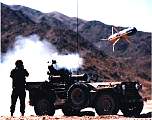 |
 |
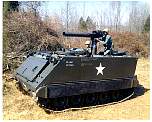 |
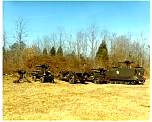 |
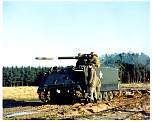 |
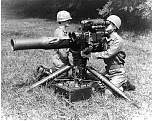 |
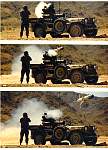 |
 |
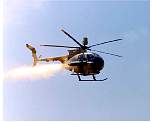 |
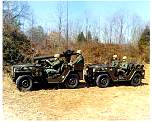 |
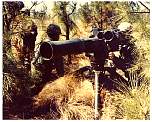 |
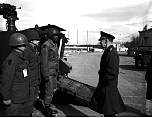 |
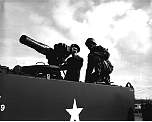 |
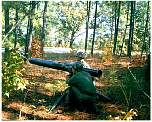 |
 |
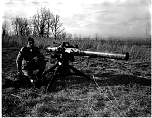 |
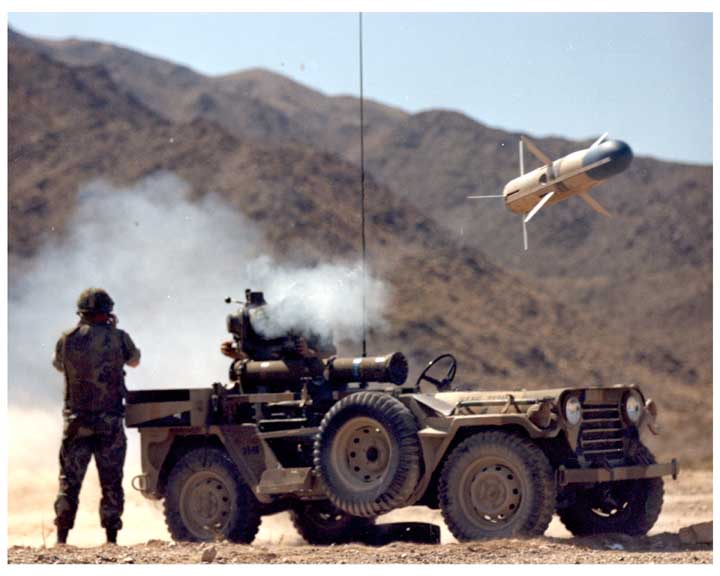 |
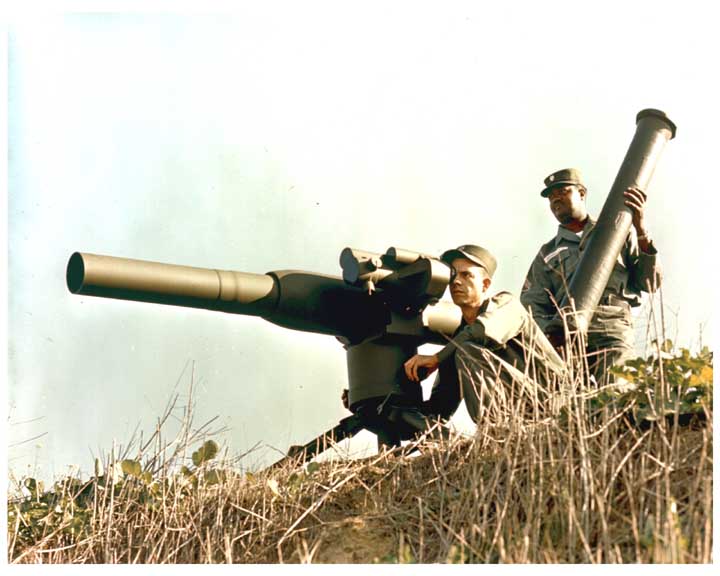 |
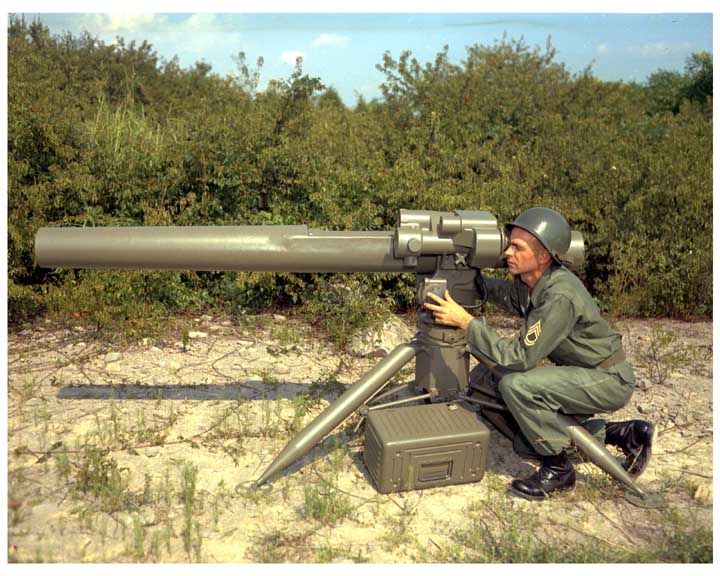 |
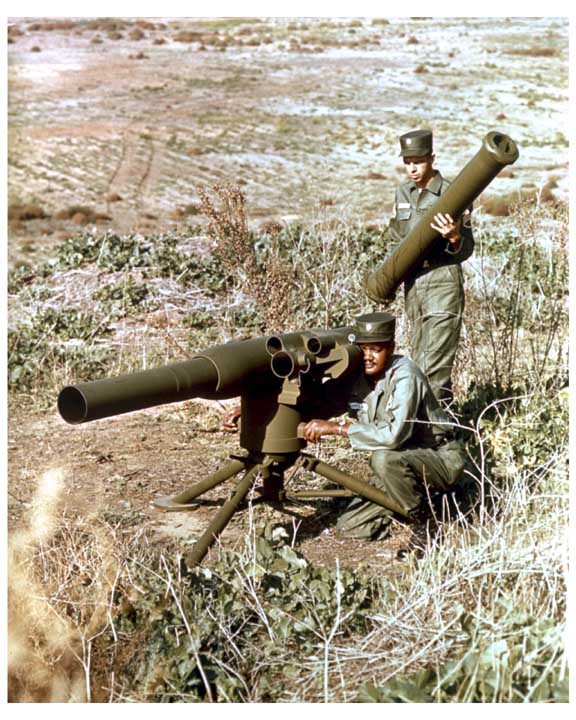 |
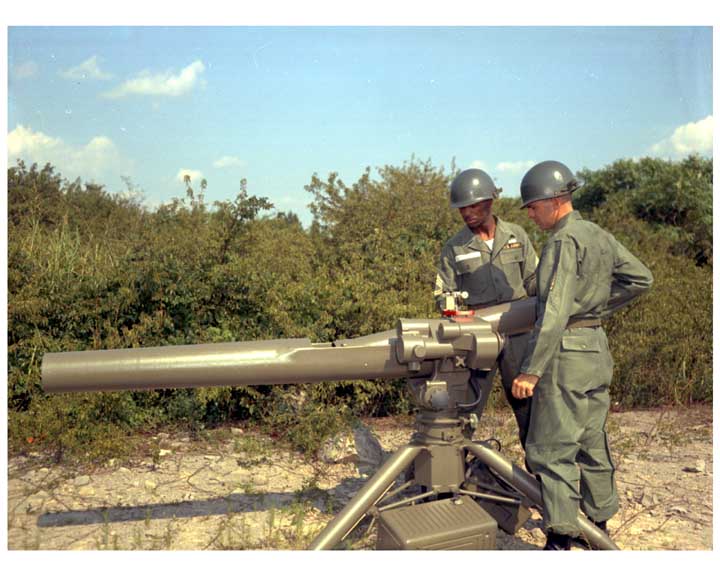 |
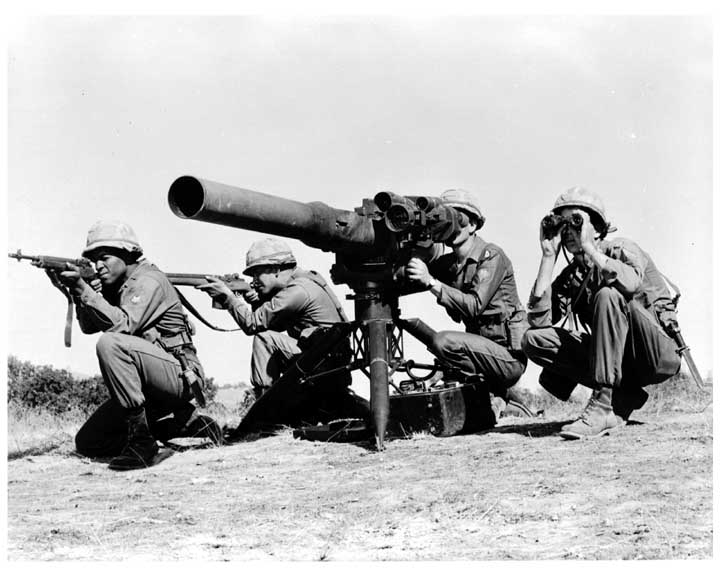 |
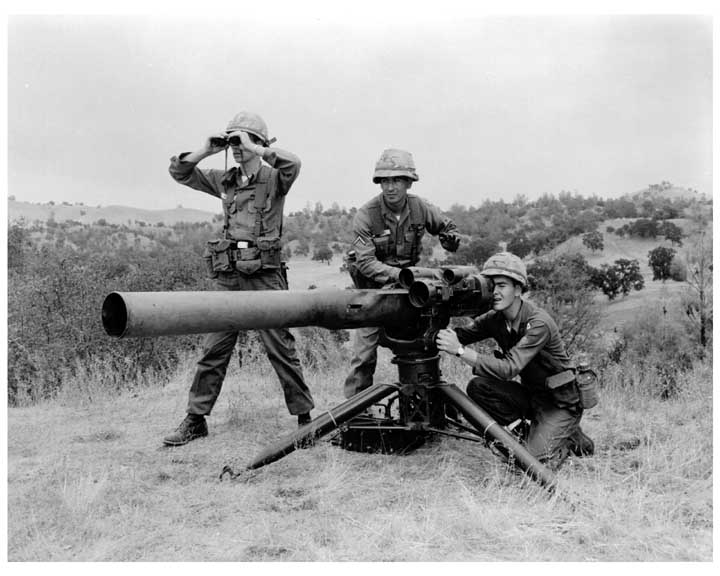 |
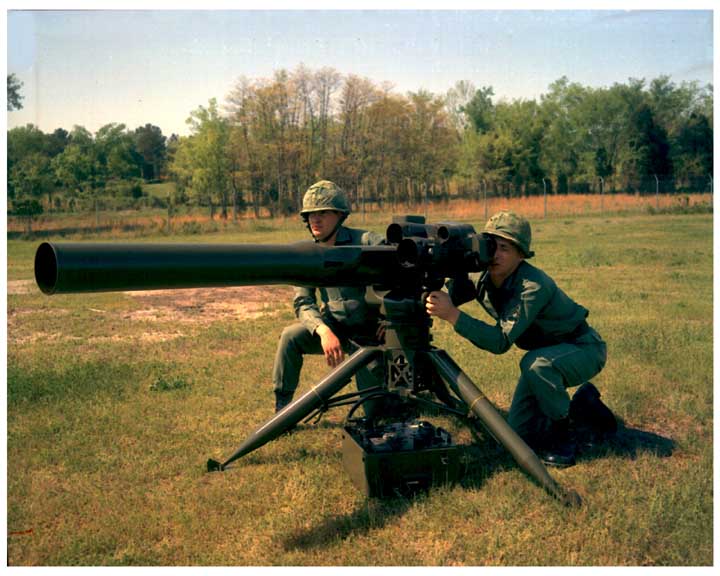 |
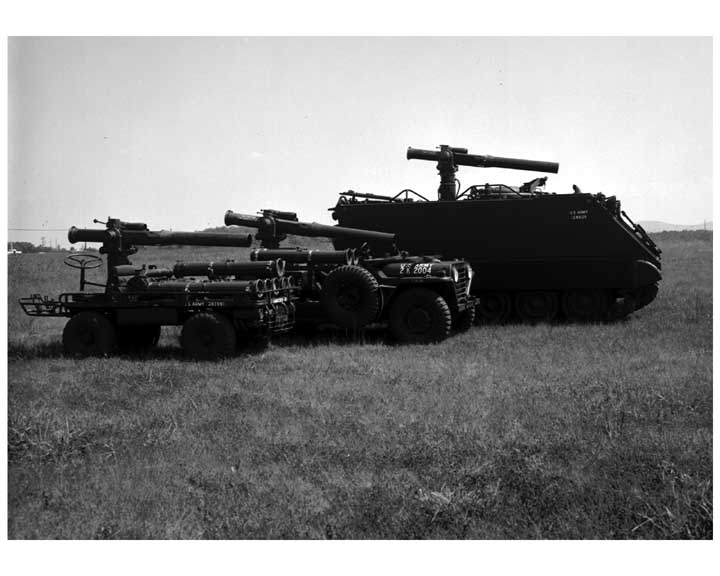 |
 |
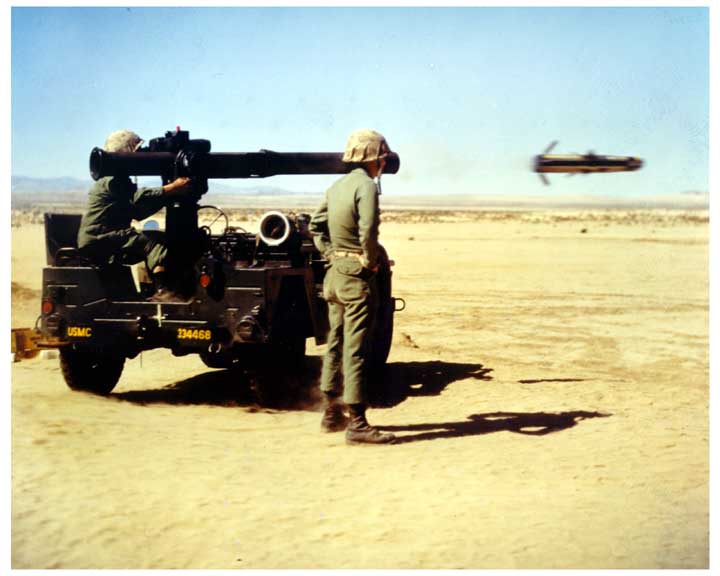 |
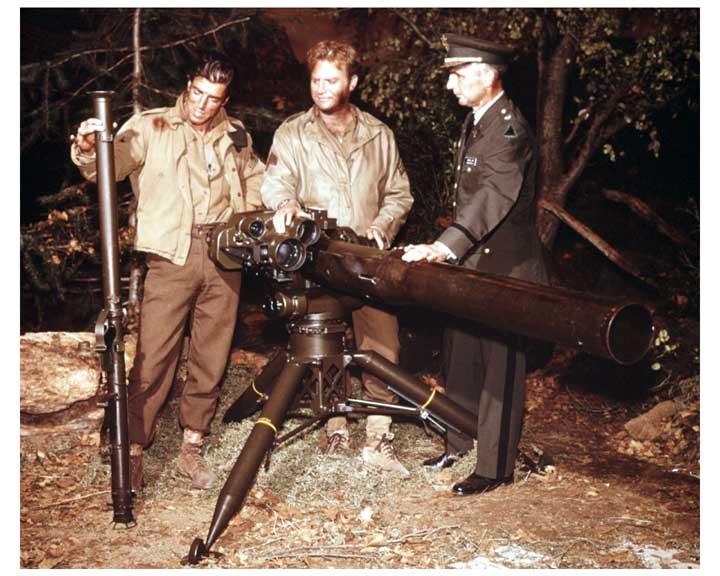 |
 |
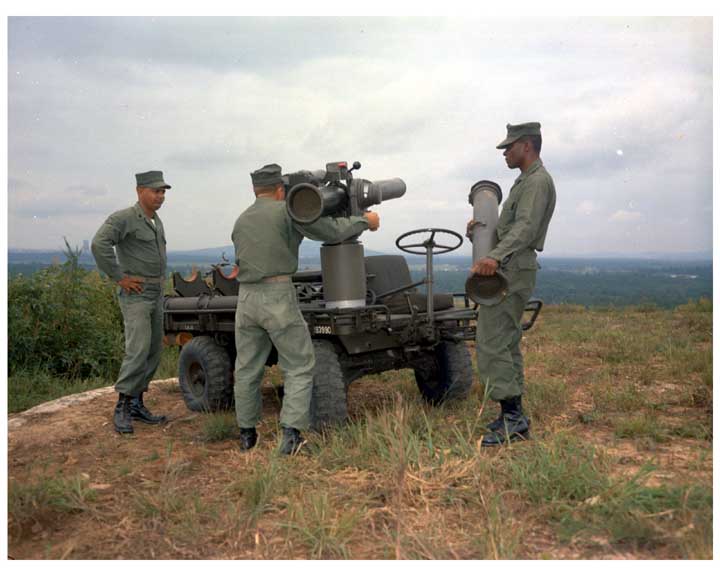 |
 |
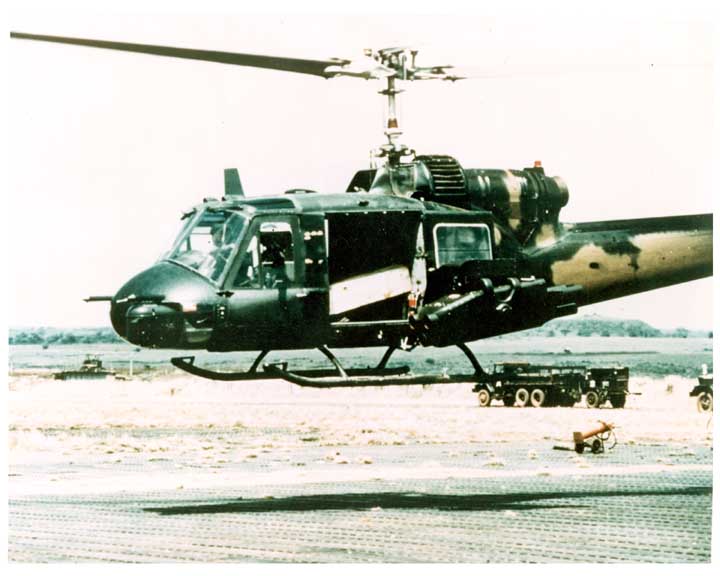 |
